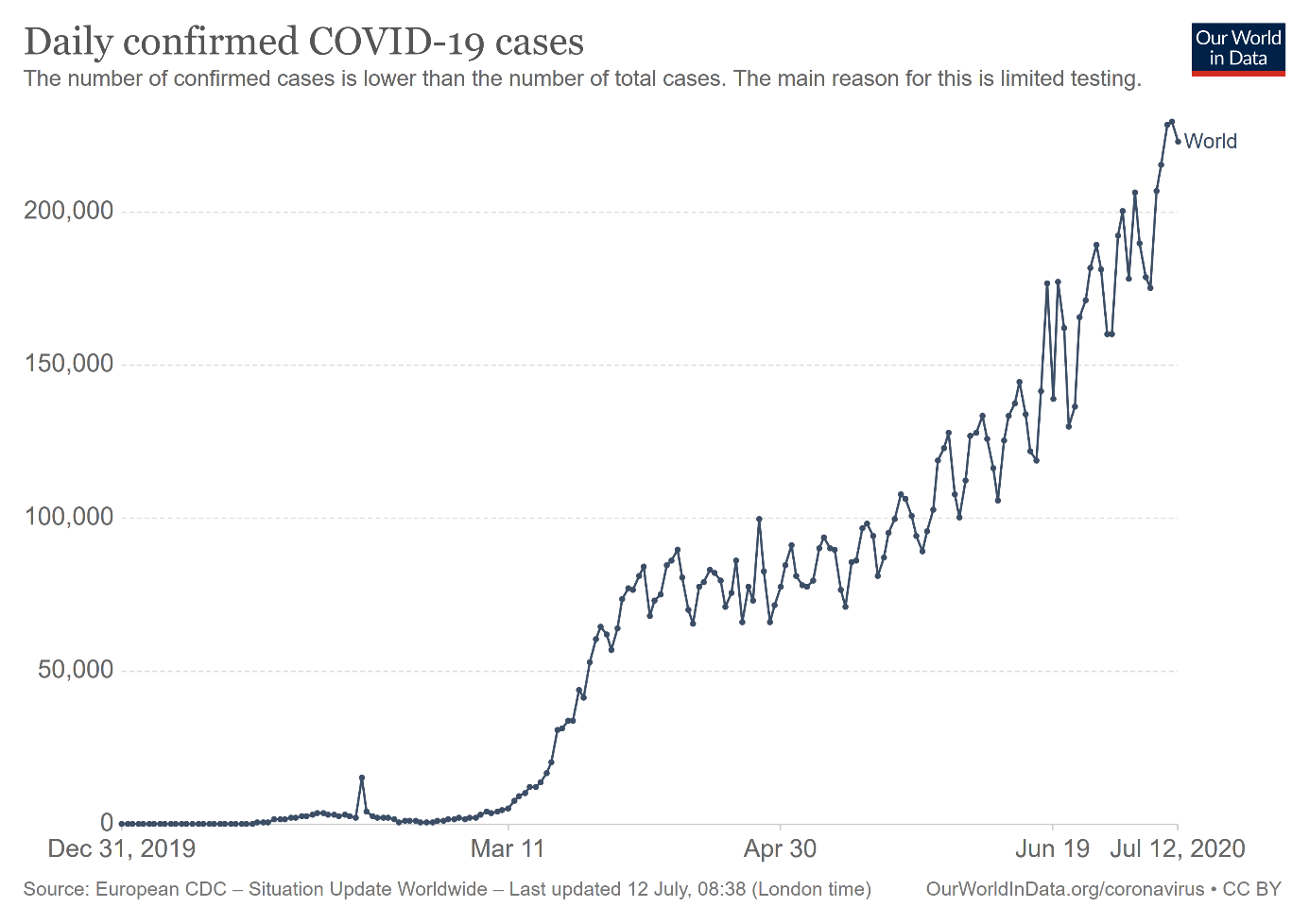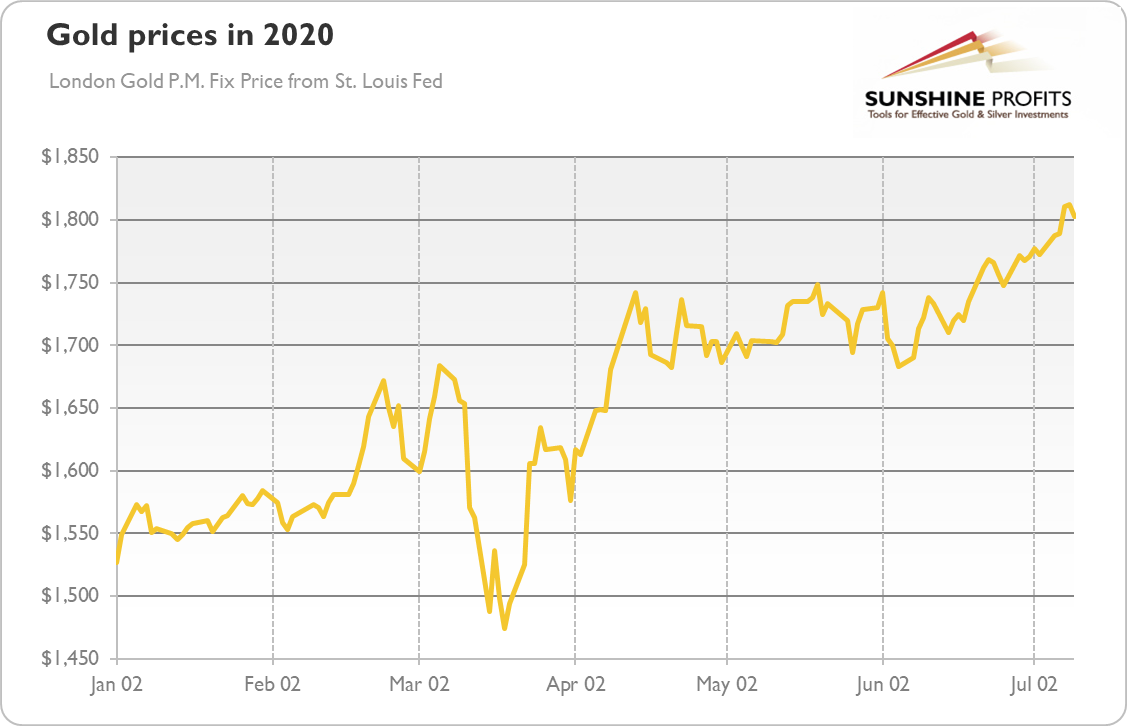The number of cases of COVID-19 in the U.S. have been rallying very quickly in last weeks, giving way only to the gold prices, which have surpassed $1,800.
It's not easy to terminate the viruses, especially that they are not quite alive. Indeed, the pandemic of the coronavirus is still not over, as the chart below shows. The global number of daily confirmedCOVID-19 cases has surpassed 220,000 last week - and the trend is still upward.

The rising number of infections in the world is mainly driven by outbreaks in Latin America, but epidemic continues to spread in the United States as well. Actually, the country reported on Friday another record single-day spike of more than 63,000 new cases, as the chart below shows. In total, more than 3 million of Americans got infected and more than 133,000 died because of coronavirus. Importantly, a majority of American states have reported an increase in Covid-19 cases over the last several days.

The spike in in the U.S. infections triggered worries about fresh lockdowns in America and the breakdown of the already fragile economic recovery. Justified worries - data shows that U.S. consumers reduced their visits into shops in the most infected regions of the country. Several other indicators also suggest that economic recovery slowed down or even stopped at the turn of June and July, partially because of the new outbreaks of the coronavirus. If the resurgence is not contained quickly (for example thanks due to wearing masks), the economic recovery will slow down or even collapse. And although the initial claims fell down further to 1.31 million last week, beating market's expectations, they have been falling very, very slowly, as the chart below shows.

The concerns about the epidemiological situation and economic consequences weakened the risk appetite among investors while boosted safe-haven assets such as gold.
Implications for Gold
Indeed, the price of the yellow metal has jumped above the $1,800, as the chart below shows.

This fact is of great importance, as $1,800 was another important level surpassed by the gold since it escaped its sideways trend in 2019. When gold jumped above $1,400, after a few years of being trapped in a narrow trading range of $1,150-$1,350, we knew that something important was happening. Now, gold gained almost 20 percent in 2020 and it needs less than $100 to break its all-time record!
What does it all mean for the gold market? Well, after reaching $1,800, we could see a period of consolidation, or even a correction. After all, speculative positions in Comex are substantial. But, given macroeconomic backdrop, there is further room for gold to go higher in the long-run. The fragile recovery with a lot of uncertainty about the future path of pandemic and economic growth (as well as the outcome of the U.S. November presidential elections), loose fiscal policy and lax monetary policy should support gold prices. The real interest rates are negative. They can go up, but the upside is potential, as investors expect that the Fed will control the yield curve. Actually, the dovish Fed and easy money are among the reasons while gold has been rising simultaneously with the U.S. stock market.
And if gold sets a new record, new investors will join the bulls' party, strengthening the positive momentum. What is, however, important, is that - for now - the current rally in gold has been steady, and we see neither bubble nor speculative fever in the gold market right now. On the contrary, the current rally has been very gradual - especially given the depth of the Great Lockdown and economic crisis. Hence, it was driven by long-term investors rather than by speculators, which bodes well for the long-term outlook for gold.
Disclaimer: Please note that the aim of the above analysis is to discuss the likely long-term impact of the featured phenomenon on the price of gold and this analysis does not indicate (nor does it aim to do so) whether gold is likely to move higher or lower in the short- or medium term. In order to determine the latter, many additional factors need to be considered (i.e. sentiment, chart patterns, cycles, indicators, ratios, self-similar patterns and more) and we are taking them into account (and discussing the short- and medium-term outlook) in our trading alerts.
